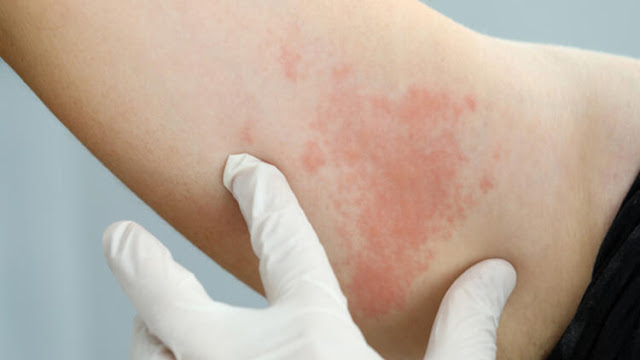Endokannabinoid sistemin işlevleri
Endokannabinoid sistemi, çeşitli endojen ligandlardan, reseptörlerinden ve karmaşık bir enzim ve taşıyıcı aygıttan oluşur. Endokannabinoid sisteminin bileşenlerinin her biri, vücutta çeşitli endokannabinoid moleküllerinin sentezlenmesi, salınması, taşınması ve / veya parçalanması ile ilgilidir. Ayrıca, "kanabinoid benzeri" roller sergilediği bilinen moleküller, endokannabinoid sistem yolunda da yer alabilir.
Vücudumuzda doğal olarak bulunan endojen kannabinoidlere ek olarak, fitokannabinoidler olarak bilinen ikinci bir kannabinoid sınıfıdır. Bugüne kadar Cannabiscinsinden, en önemlisi tetrahidrokannabinol (THC) ve kannabidiol (CBD) ana aktif bileşiklerini içeren 100'den fazla farklı fitokanabinoid tanımlanmıştır .
Hem endokannabinoidlerin hem de fitokannabinoidlerin insan vücudunda çok çeşitli farklı hücresel hedefleri aktif hale getirdiği, antagonize ettiği veya inhibe ettiği gösterilmiştir.
Derideki endokannabinoid sistem
Son yirmi yılda yapılan kapsamlı araştırmalar, hem endokannabinoidlerin hem de fitokannabinoidlerin cilt homeostazında çeşitli biyolojik etkiler gösterdiğini göstermiştir.
Bazılarının epidermal keratinositleri, melanositleri, mast hücrelerini, fibroblastları, sebositleri, ter bezi hücrelerini ve bazı saç folikül popülasyonlarını içerdiği cildin sayısız hücre tipinin farklı endokannabinoid moleküllerini ve reseptörlerini barındırdığı gösterilmiştir.
Bu bilgiyi akılda bulundurarak, araştırmacılar bu endokannabinoid ligandlarının ve reseptörlerinin cilt ile ilgili hastalıklarda nasıl bir rol oynadıklarının anlaşılmasına yönelik çabalarına odaklanmışlardır.
Endokannabinoidler ve cilt hastalıkları
Endokannabinoid sistemin çok çeşitli cilt koşulları üzerindeki etkisi iyi belgelenmiştir. Aşağıda tartışılan cilt koşullarına ek olarak, endokannabinoid sinyalleri ayrıca atopik dermatit, melanom, sistemik skleroz, yara iyileşme süreçleri, melanom dışı cilt kanserleri ve daha fazlası ile de ilişkilendirilmiştir.
Akne
Kannabinoid istismar en köklü yan etkilerinden biri olan sivilce açıkça cilt içinde mevcut insan yağ bezleri üzerinde etkisi için bu maddenin phytocannabinoids yeteneğini gösteriyor.
Araştırmacılar, her iki CB bulduk 1 ve CB 2 iki baskın endocannabinoid duyarlı reseptörleri vardır, insan yağ bezleri cinsinden ifade edilir. CB 2'nin insan yağ bezlerinde keşfi, araştırmacıların bu reseptörün homeostatik sebasöz lipogenezinin (yağ bezleri içinde yağların oluşumu) korunmasındaki rolünü ortaya çıkarmasına yol açmıştır. Bu reseptörlerin aşırı uyarılması gibi endojen sebasöz yoldaki herhangi bir düzensizlik, bu nedenle hem sebore hem de aknenin gelişimini destekleyebilir.
Pigmentasyon bozuklukları
İn vitro olarak , birincil insan melanositler üzerinde çalışmalar bu hücrelerin CB dahil olmak üzere çeşitli endokanabinoid reseptörlerini ifade göstermiştir 1 ve CB 2, endokanabinoid hedef, GPR119 ve kanabinoid duyarlı kalsiyum kanalının TRPV1.
CBD'ye maruz kaldıklarında, insan epidermal melanositlerinin, artan melanogenez ve tirozinaz aktivitesi gösterdiği bulunmuştur. Bu CB etkinleştirmek yeteneği 1 sinyalizasyon yolunun -coupled tedavi bu tip daha iyi vitiligo gibi kronik depigmentasyon koşullarını anlamak için kullanılabileceğini belirtir.
sedef hastalığı
Sedef hastalığı kronik bir enflamatuar cilt hastalığıdır. Psoriasisin patogenezi, tam olarak bilinmemesine rağmen, hem genetik hem de epigenetik anormallikler, aynı zamanda derinin mikrobiyota ve pH'sındaki değişiklikler ile ilişkilendirilmiştir.
Derideki CB 1 ve CB 2 yollarında yer alanlar gibi çeşitli endokannabinoidlerin anti-proliferatif ve antienflamatuar özelliklerini anlamak, bu yolların hedeflenmesinin daha etkili sedef hastalığı tedavisi gelişimine yardımcı olabileceği önerisine yol açmıştır.
Aslında, endokannabinoid yolaklarının düzenlenmesi ile sedef gelişimi arasındaki ilişki birkaç farklı çalışma ile gösterilmiştir. Örneğin, plazmadaki yüksek anandamid seviyeleri, granülositlerdeki yağ asidi amid hidrolaz ve monoasilgliserol lipaz aktivitesinin artmış olması ve GPR55'in yukarı doğru düzenlenmesi, psoriasis hastalarının endokannabinoid disregülasyonunda potansiyel tutulumla ilişkilendirilmiştir.
Kaynak:
Toth, KF, Adam, D., Biro, T. ve Olah, A. (2019). Derideki Kannabinoid Sinyali: “C (ut) annabinoid” Sisteminin Terapötik Potansiyeli. Moleküller. 24 (918). DOI: 10.3390 / moleküller24050918.












